In Lapland, North of the Arctic circle in Finland, it takes only a few minutes to forget the frenzy of daily life and to plunge into a peaceful, stillness and pristine nature. Kilpisjärvi (Gilbbesjávri in Sámi language) has a population of about 100 and is located near the border with Sweden and Norway. This small village lies in the northernmost part of the district of Enontekiö, and the Arctic Ocean is only about 30 miles away as the crow flies! In this remote area, the vast wilderness displays beautiful landscapes and the beauty of the infinite tundra rejuvenates any weary mind. If you are looking for a quiet and authentic corner and a total change of scenery, Kilpisjärvi is the place to go !
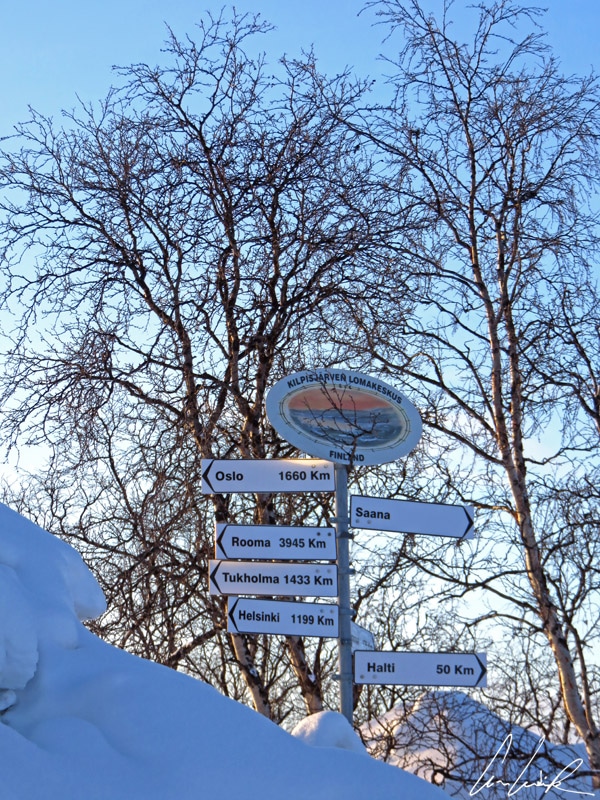
Driving a snowmobile in Lapland, Finland
When winter takes hold in Kilpisjärvi and the surrounding mountains are snow-covered, the region does not simply go into hibernation. On the contrary, the snow facilitates transportation that is often difficult and unrewarding the rest of the year… Adventure lovers, it is time to ride your snowmobile and explore the countryside and take a big breath of fresh and pure air. Wrapped in warm and comfortable outfits, we depart for the point where Finland, Sweden and Norway meet, a very popular spot located just outside the village. The monument is about 2 miles northwest of Lake Kilpisjärvi. Before leaving, the guide explains, of course, the basics of driving a snowmobile and the necessary safety instructions… Nothing complicated since there is just a throttle to operate and brakes to use when necessary… it is important to use the engine brake and only hit the brake pedal when strictly necessary (gulp!). The guide starts the snowmobiles one by one for our tour, their headlights light up… and we head off into the unknown. At the beginning, the guide goes slowly, “Chi va piano va sano e va lontano ?” to make sure we follow and handle our snowmobile as well uphill as downhill… Then in a change of pace, the snowmobile picks up speed and its skis dig up small clumps of the thick ice that covers the lake. We begin to feel the machine’s power.

Magical colorless landscapes roll forward in front of us, and we pass a sumptuous succession of lakes and birch forests. Between birch trees we see traces of a bird… A Lagopus, our guide tells us, with white winter plumage to blend into the snowy background, like Arctic hares and foxes. Whether in the snow, in the sun or the arctic cold, the time spent enjoying the vastness of winter is wonderfully rewarding. Alone in this beautiful natural wilderness of immaculate whiteness, your eyes take you several miles away, and the only noise comes from your own breath, the gentle wind playing with the pine trees, and the crackle of snow under your shoes !
« Snow soothes everything, it looks like it carries silence or, rather than in the space that separates two flakes, between flakes, there is silence ».
(Jón Kalman Stefánsson, The Sorrow of Angels)
The locals say, “The best thing here is nature”, and it is open to everyone. One of the particularities of Finnish law is the concept of “Everyman’s right”: everyone is entitled to walk in the forest, camp, fish, hunt, gather mushrooms, wild berries and flowers – as long as they are not protected species – and breathe the fresh air !

Malla Strict Nature Reserce and the three-country cairn
The three–country cairn marks the international borders between the three nordic countries, Sweden, Norway and Finland. It is called “Treriksröset” in Swedish, “Treriksrøysa” in Norwegian, “Kolmen valtakunnan rajapyykki” in Finnish and “Golmma riikka urna” in Sámi. It lies, almost inaccessible, in the middle of the water about 33 feet from the shore (there is still a wooden pontoon to approach it during the summer period). During the winter it is painted yellow… the lake Goldajärvi is completely frozen and covered with a thick layer of snow!… it is the perfect opportunity to tour Scandinavia in 2 minutes… The current monument, a conical frustum made of concrete, was inaugurated in July 1926 and replaced an old “cairn” erected in 1897 by Norway and Russia, which then administered the Grand Duchy of Finland. Sweden has not participated because of a disagreement over the exact border with Norway and did not contribute the stones until 1901…

The three-country cairn marks the international borders between the three nordic countries
At this spot we are in the Malla Strict Nature Reserve, a protected area since 1916 and declared a Strict Nature Reserve in 1938. It covers an area of 12 square miles and is crossed by the “Nordkalottruta” in Norwegian, “Kalottireitti” in Finnish, and “Nordkalottleden” in Swedish. This Arctic trail is a marked hiking trail crossing the 3 Scandinavian countries and running 44 miles in Finland, 236 miles in Norway and 217 miles in Sweden. The 497 mile trail begins at Kautokeino in northern Norway and ends further south at Sulitjelma in Norway or, on the alternative trail, in Kvikkjokk in Sweden. Along its way, it follows the well-known hiking trail Padjelantaleden in northern Sweden, and the last section of the “Nordkalottleden” leads through a deep wilderness area between Kilpisjärvi and Kautokeino. The trail (especially in the highlands of Lapland) is dotted with rudimentary cabins called “autiotupa“, where any hiker can stay for free, cook a hot meal, simply warm up in front of a good fire and be guarded by a small mythical being from a parallel world. While sipping a delicious hot berry juice in my “kuska” (a traditional cup usually made from birch wood) I can see through the window the incessant ballet of sparrows around the bird feeder and the oddly shaped ice that hangs from the roof… the sun casts a magnificent glow in shades of red along the horizon, and lost in the this endless snow-cover I feel alone in the world, in communion with nature.
« The narrow path winds up the hill,
It curves into the trees;
Behind me fjord and valley fill
With moon-hazed reveries ».
(Henrik Ibsen, On The Heights, poem)
After just a few days here I would surely become a follower of “Friluftsliv” (pronounced free-loofts-liv) or the art of reconnecting with nature. This strange word first appeared in 1859 in a poem by the Norwegian playwright Henrik Ibsen. It means “free-air-life” in Norwegian. The word contains three keywords: “Fri” (freedom), “Luft” (air) and “Liv” (life). It is a philosophy of life where the only quest is to explore and appreciate nature and to forget the cacophony of « Modern Times ».

The Saana fell, a sacred mountain to the Sámi people
The Saana fell overlooking the village of Kilpisjärvi is sacred to the Sámi people. Sacrificial fires are lit on its summit in honor of the supreme god “Ukko” (god of heaven), the divinity of the sky, thunder, and lighting in Finnish mythology. According to legend the two adjacent mountains, Malla and Saana fells, were once two giants who were turned into ice on their wedding day by an unwelcome sight. Saana fell is also one of the highest spots in Finland, 3,376 feet above sea level at its peak and 1,824 above the adjacent Lake Kilpisjãrvi. If you feel like it, you accept the challenge of hiking to the top where you have a sweeping view !

« With such a cold weather like this, we should see the Northern Lights tonight ?
– The cold weather has nothing to do with Northern Lights, said Klemet. To see northern lights, you need clear sky. However, in winter, when the sky is clear it means a cold weather.
– Where do these northern lights come from ? – Oh, I don’t really know. Something to do with the sun. In our culture, we used to say that northern lights were the eyes of death. That’s why you should never point a finger at them. »
(Olivier Truc, French author – Forty Days Without Shadow)

The culture of Sámi reindeer herding in Finnish Lapland
« – What was he afraid of?” continued Nina.
– He was afraid of being lost. He was afraid of getting lost. He was afraid of screwing up.
– You mean as a breeder?
– As a breeder, as a man. A farmer who doesn’t know how to take care of his reindeer is not a man. »
(Olivier Truc, French author – Forty Days Without Shadow)

Ice fishing in Sámi culture
Fishing is one of the traditional activities of the Sámi people. In winter, when lakes are frozen, they practice ice fishing. At first glance, this winter hobby seems unusual… First, the fisherman must travel a long distance through vast white expanses into the middle of a frozen lake, the middle of nowhere, and then try his luck and hope to catch some fish. First, he must choose, in this breathtakingly peaceful place, a suitable spot and break the thick layer of ice with a core drill.Now, the icebreaker game is over … or rather the ice is broken. Then, we have to prepare the hole: with a ladle, we have to free the hole of barely 8 inches in diameter from the ice particles…
« My fish is not fresh ? »
(Ordralfabétix, the fresh fish merchant of the village – Asterix)
Then he baits his line and drops it through the hole in… and sits comfortably on a reindeer skin, waiting patiently for something to happen… the wait can last seemingly endless hours. But this wait can be a kind of meditative or contemplative retreat. The surrounding infinite white paradise and the total silence (except on windy days) clears the mind unexpectedly and effortlessly. In this state of mind, catching a fish is not the ultimate purpose! It is probably the true essence of ice-fishing.
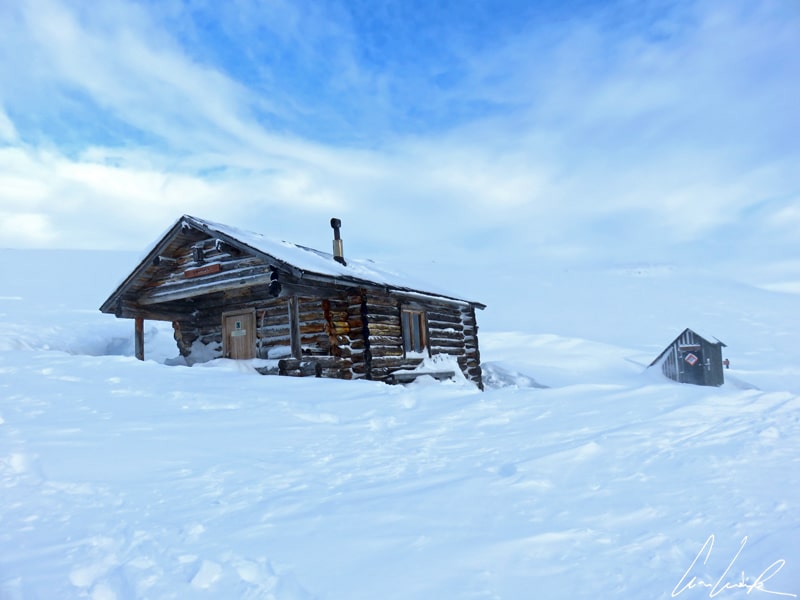
Finally, there are fishing cabins that look like they have jumped off a postcard (imagine the cabin at the bottom of a garden in winter). These are equipped with all the necessary equipment to light a fire, prepare hot drinks and enjoy the results of your fishing expedition (or not). After this experience, you will be a changed man… or woman. I leave you with the traditional song joik (Say “yoik”) of the Sámi people of the nordic countries and the Kola peninsula of Russia. The sound is comparable to the traditional chanting of some Native American cultures and shares some shamanic traditions of Siberia which mimic the sounds of nature. During Christianization the song was condemned as sinful by the authorities because Joik songs were considered a pagan and barbaric practice… That is why the interpretation Jag är fri (I’m free) by Swedish singer Jon Henrik Fjällgren is doubly interesting !
Find more about Lapland
- Lapland, a Winter Paradise
- Lapland, Aurora Borealis Paradise
- Lapland: Northern lights like you’ve never seen them before!

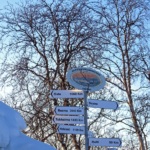
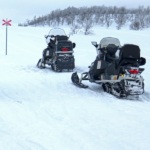
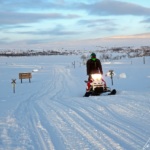

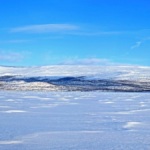

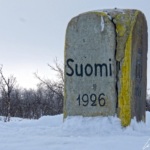
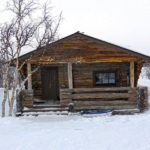

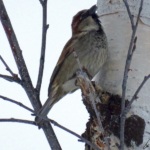
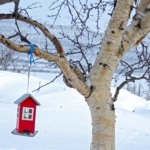
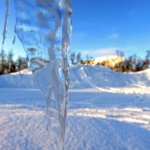
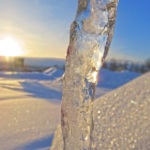

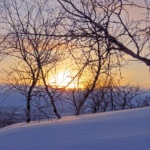

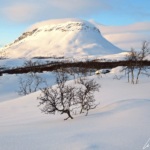
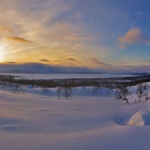
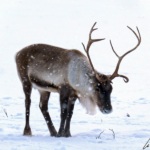
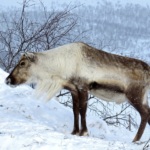
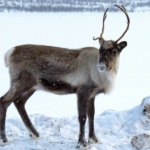
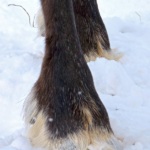
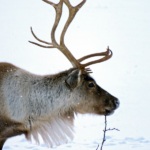
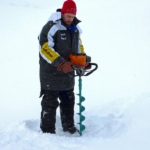
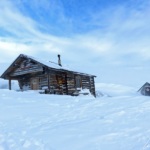


Fantastic! I was passing Kilpisjärvi in summer. Lovely to see it in winter, it looks fantastic.
I still want to get up north to get in touch and maybe make a documentary about Saami and their traditional ways of living. (although the traditional ways of living is a very small part, modern Saami don’t have much to do with it)
Lovely post and thanks for writing about the region I really love 🙂
The Sami culture is the oldest culture in the far north of Europe: ancient sounds, unique craftwork traditions and a particular language live side by side with modern technology ! I’ve tried to introduce to just a few “Sámi things” you can experience over a trip to Lapland… but there is so much more to discover and learn 🙂
Wow! There is no a lot of informations about Sami when I Google it, thanks for these, it’s really helpful and now I want to go there as soon is possible. And pictures are amazing! 🙂
Thank you 🙂 The Sami possess a rich cultural heritage and are known for their close connection to the land they live on… We were so glad to leave the clock behind and explore the vast expanses of the breathtaking Sámi homeland !
I’d love to see a reindeer in the wild! We were hoping to in Iceland but no luck. I love all of your photos…such a winter wonderland!
Lapland in winter is a magical experience, a scenic winter wonderland located deep inside the Arctic Circle and blanketed in snow ! Reindeer far outnumber people here, and snow-laden trees form bizarre sculptures in a vast and silent landscape:-)
This post sure brought back memories. I love the landscape shots of Lapland, it really does take me back to my trip there last year in the winter. I also had a meal with Sami people in Utsjoki and that was fantastic (especially the singing). Love the reindeer as well, so many of them up there.
Today, Sami culture is meeting the modern world in a new way. No Sami people live a completely traditional life today, and the everyday lives of many of these indigenous people appears very modern indeed… At the same time, however, interest in joik, duoddji and the language itself is increasing rapidly. Traditional joik is being blended with modern rhythms. It’s just fantastic !
Beautiful pictures – Kilpisjärvi looks like such a beautiful place. I’ve wanted to visit Lapland since I was a child – it seems like a magical place!
Kilpisjärvi is completely above the treeline making the nature totally unique and giving the possibility for true wilderness experiences ! A travel to Lapland during the Winter it’s something everybody should experience at least once in their lifetime 😉
I love Lapland, but I’ve only visited the Swedish and Norwegian parts and only in summer. It must be beautiful in winter. I’ve just downloaded the book you recommend to my Kindle as I’ve never heard of the reindeer police, but I love a good bit of Nordic Noir.
I would love to travel to Norway early summer, especially the months of June and July to explore the Arctic tundra, island-hop around scenic archipelagos, cruise majestic fjords, and hike magnificent landscapes under a never setting midnight sun 🙂 I like reading Nordic thrillers 🙂 especially from Stieg Larsson, Henning Mankell, Jo Nesbo & Camilla Lackberg !
Wow! the place looks so amazing. I always seek out for places which have less human interference and this is one of those places. Thanks for sharing this informative piece. 🙂
Lapland is a winter wonderland of majestic beauty and tranquillity ! There are so many things that you can only do when it’s really, truly cold outside, and Finnish Lapland is the perfect place…
Wow this looks like such a beautiful place! I would probably not have thought to travel to Lapland but now I want to book a trip!
Lapland snowy countryside was made for exploring and, wherever you stay, winter sports like snowmobiling and skiing are fantastic outdoor activities.
Interesting tales about Lapland. The bit about Reindeer was quite intriguing. Did not know that they use the entire animal for something or the other. On the whole, the place looks like a winter dreamland
Reindeer herding is a central part of the Sámi culture.The reindeer have been a valuable resource for the Sami and it is difficult to imagine the Sami surviving without the reindeer. In traditional herding, reindeer were used for food, clothing, trade (reindeer as a form of money), and for labor. Even before reindeer herding began the Sami lived on wild reindeer 😉
I have always wanted to go here and your photos are fantastic. The landscape is just beautiful.
Lapland in winter is a magical experience, a scenic winter wonderland located and blanketed in snow from December to April 🙂
Lapland is a lovely place. I love all your pictures. The wild life and the scenery are breathtaking x
Thank you 🙂 Finland’s rugged Arctic wilderness offers epic snow, cozy luxury, and celestial lights to cold-weather adventurers !
These shots are majestic, wow. I’m not much of a cold weather person but your post actually might make me re-consider my vacation plans in the future!
Lapland offers a refreshingly different experiences: this sprawling wilderness where reindeer outnumber humans, offers excellent skiing, snowshoeing, husky rides, and ice swimming while you breathe the crisp, clean air 😉
Such a great post on the area. I leave never thought of visiting but you’ve really made it sound so interesting. I love the light in your photos, so fresh and bright.
Thank you ! Finnish Lapland is a landscape of forest giving way to fells. This wilderness is 30 percent of Finland’s total land. This sense of space and tranquility constitutes its appeal, whatever the season. But in winter, with the sun’s half-hearted attempt to rise amid the silencing effect of deep snow, its beauty can feel otherworldly.
I’m not a snow person, but this looks so beautiful. And, I love how informative the post is. I had never heard of this culture before.
The Sámi, the only indigenous people of the European Union, are “early environmentalists” who have a close connection to the land, and reindeer herding is a central their culture… We got an unforgettable experience with nature and passionate Sami people 🙂
This is a place that honestly that I would stay away from because of the cold. It is however very appealing so great job with that. I may change my mind yet.
Finns champion the health benefits of extreme heat and extreme cold as being great for the circulation. Saunas are an important part of life in Finland too 🙂
Fascinating! Your pictures are quite breathtaking, esp the sunset.
I loved reading about the mythology of Malla and Saana fells and Aurora Borealis.
Thank you 🙂 It’s great totake few pictures in the evening light and enjoy the sound of silence… In Sami mythology, everything has a soul. Thus, every living and non-living being has a story of their own. Rocks and trees, foxes and reindeer, the Northern Lights in the sky, all carry knowledge and wisdom within. Spirits are present in everything, wherever one wanders.
I’ve never been to any cold and snowy places like Lapland. But your photos are wanting to take me there. And that Saana Fell, that looks gorgeous and very pleasing to my eyes.
Saana is only the 25th tallest fell in Finland 🙂 but second most known because of its impressive shape 🙂